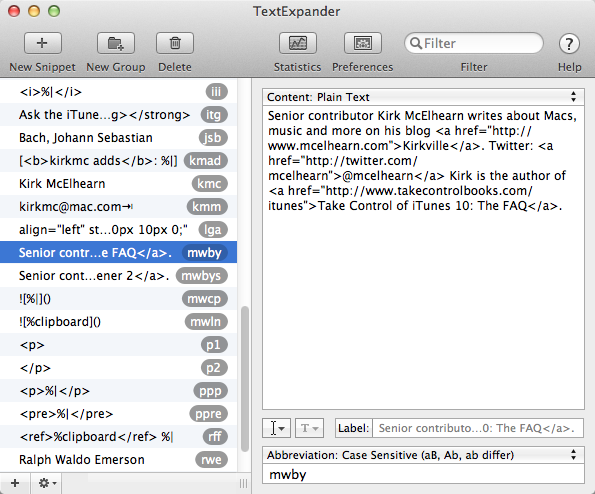
The next time you find yourself having to tell someone about yourself, be sure to create a snippet to answer that question in future. You could create bios to introduce yourself to new team members, to pitch your business to new customers, and for potential employers while on a job hunt.

This one can be helpful in so many contexts, not just if you’re being interviewed as the episode mentions. We loved how they discussed creating multiple bios based on the context they’ll be used in, so it’s up to you if you create one customizable snippet or split them into several.

You’d be surprised by how often you introduce yourself on the daily! Save yourself valuable time by creating a snippet with a bio that summarizes yourself and/or your work, as suggested in this podcast interview. Look out for any resources you commonly send links to and add those to your library too. Then, as you write new ones, pay attention to any more phrases that could be added quickly to a snippet. Start out by going back through your recent feedback reports or communications and copying and pasting your most used terms. Keep it simple with basic snippets, or add more layers by creating templates with fill-in fields, multiple-choice options, and more. Why not cut back on that redundant typing by creating snippets that contain your key phrases? It’s totally up to you how advanced you want these snippets to be.

AugUse TextExpander to Create Snippets To Give Feedback More EasilyĬhances are, if you’re a leader or an academic like this TextExpander community member, you use a lot of the same feedback over and over. Write up lengthier explanations, add links, and give examples once and use abbreviations to insert the text. Save yourself time by using to insert snippets of text. A tip for faculty who dislike rewriting the same feedback over and over on papers.


 0 kommentar(er)
0 kommentar(er)
